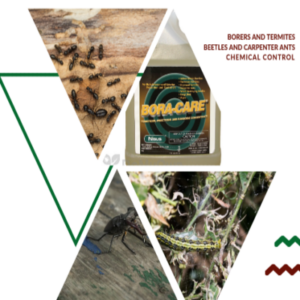Heating Your House With Firewood: Part 3

Importance of 20% MC
In Part 2, we discussed the importance of drying to bring down the wood moisture content (MC) and increase its Btu yield. The longer the wood sits, the greater its risk of attack by insects. This is particularly true as long as the wood is over 20% MC. Most, but not all, insects that attack wood will do so if the MC is greater than 20%. So, we essentially have two groups of insects to contend with here: (1) those that attack green wood and wood with a MC greater than 20% and (2) those that attack dry wood and wood with a MC less than 20%. Clearly, most insects prefer wood over 20% MC. Insects that attack green wood cannot attack dry wood.
Borers and Termites
The green-wood attacking insects are roundhead borers and flathead borers. You can recognize their larvae based on their slender and white bodies, brown head heads, and prominent jaws. The larvae produce chewing noises, similar to clicking of fingernails. Termites produce a popping or snapping sound as they attack wood. Insects commonly produce small tunnels in the wood as they eat and move. Piles of sawdust, known as fras, will be evident in areas that have been infested. Some insects will live in the wood for one year or more and then emerge as adults. Numerous small, tiny holes will be present on the wood surface which represents the exit, not entrance, holes of the adults.
Beetles and Carpenter Ants
Bark beetles, Ips beetles, and Formosan termites will attack living trees and then be present in any firewood cut from these trees. Native termites will attack green wood and Formosan termites can attack either dry or green wood. Many insects have been unknowingly transferred from one area to another by somebody moving firewood. Beetles feed on the inner bark and chew at prominent right angles from the central gallery. Most beetles have a one-year life cycle.
Carpenter ants can be found in green firewood and are seldom present in dry wood. These insects prefer to nest in water-damaged wood or wood that has sustained a long-term decay fungi attack. Powderpost and anobiid beetles attack dried wood. Small (1/32 to 1/8 in. diameter) exit holes and fras are signs of attack. The holes will be numerous and appear if the wood was shot with a shotgun.
Chemical Control
One method to minimize insect problems is to use the oldest wood first. This is known as “first in first out.” Spraying with an insecticide is not advisable because of the gas that will be produced upon burning. Also, most of these insecticides are spray applied and will not penetrate the wood and will be ineffective. If you do spray, then use a boron-based formulation such as Tim-Bor or BoraCare, which have low mammalian toxicity. These products will penetrate through the wood based on a moisture diffusion gradient. These products can be obtained from Nisus Corporation.
Meet the Author
Dr. Todd Shupe is the President of Wood Science Consulting, LLC. He is a well-recognized expert on wood forensics, wood preservation, wood decay and degradation, and wood species identification. He has a broad background in new product development, quality management, and marketing and sales in both the public and private sectors. For more information please visit DrToddShupe.com.
We welcome your comments below.
Thank you for visiting. We trust that you have enjoyed reading our articles.
Liked this post? Read more below or search for more topics . . .

